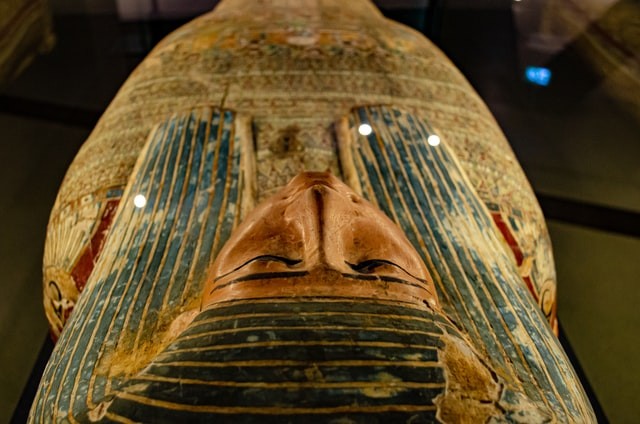A joint Egyptian-Italian excavation, which was a combined effort between the Aswan and Nibian Antiquities Zone in Egypt and the University of Milan in Italy, unearthed well-preserved mummies in an ancient Greco-Roman era tomb.
Archeologists found 30 mummies inside ancient chambers located at the bottom of a staircase leading to the tomb's entrance. The mummies consist of different ages, including children and a newborn.
Approximately 20 mummies were very well preserved inside the burial chambers. They were wrapped with terracotta sarcophagus, bandages, and cartonnage, which were used by ancient Egyptians as materials to wrap mummies.
They described the structure to be a family tomb comprising of two parts. According to Egypt Today, the first part is a rectangular-shaped building with an entrance built above the ground.
The second part connects from the entrance to a rectangular courtyard in which four burial chambers are located.
Discovery of a Greco-Roman Era Tomb

The archaeologists also found a mummy of a Greek man with a copper plaque with his name 'Nikostratos' near his body. Despite the occurrence of raids in antiquity, the mummy of the man remained intact.
According to Patrizia Piacentinin, a professor of Egyptology and Egyptian Archaeology at the University of Milan and the co-director of the excavation, the archaeologists suspect a single-family or more buried their dead kin members for several generations.
This activity spanned between the Greco-Roman era, from the Ptolemaic period in the first century B.C. until the Roman Empire period in the second or third century A.D.
Also read: 1000-Year-Old Mummy Unearthed by Archeologists in an Underground Tomb
Site of Further Excavations

More than 300 tombs were recently discovered around the Mausoleum of the Aga Khan, a granite structure built in the 20th century that is situated above a slight hill along the Nile River.
The newly discovered tomb is quite unique since it was found inside a high-ground structure. Researchers believe the structure was used as a place of sacrifice.
"It seems that, due to its position along a valley of access to the necropolis, this building was used as a sacred enclosure where sacrifices were offered to the god Khnum in the form of Aries, creator god and protector of the fertile floods of the Nile, particularly revered in Aswan," Piacentini added.
Furthermore, Piacentini and the team discovered signs of fire on the structure walls of the tomb. The nature of the fire is still unclear, but the archaeologists suspect it may possibly caused by offering ceremonies or grave robbers. The archaeologists also found animal bones, plant remains, and offering tables inside the tomb.
The joint Egyptian-Italian team has been working since 2019 in the Mausoleum of the Aga Khan area, where the tomb was discovered.
Prior to the discovery, the tomb is unknown to historians even though it is a part of the Aga Khan Mausoleum complex. Further excavations are possible in the area as PIacentinin said the discovery of the tomb is just the beginning.
Related article: Discovery of Pregnant Egyptian Mummy to Give Insight on Ancient Traditions and Customs
© 2024 NatureWorldNews.com All rights reserved. Do not reproduce without permission.




![Roundworms with Short Memories 'Stop Forgetting' When Frozen or Given Lithium [Study]](https://1471793142.rsc.cdn77.org/data/thumbs/full/70295/280/157/50/40/roundworms-with-short-memories-stop-forgetting-when-frozen-or-given-lithium-study.jpg)
